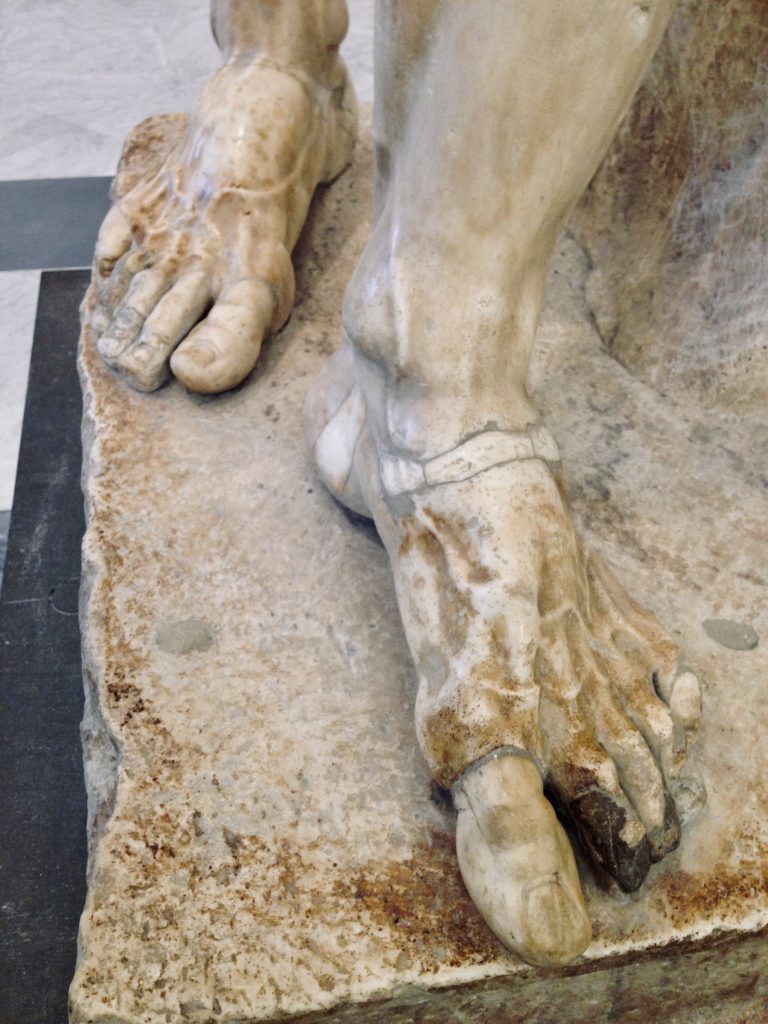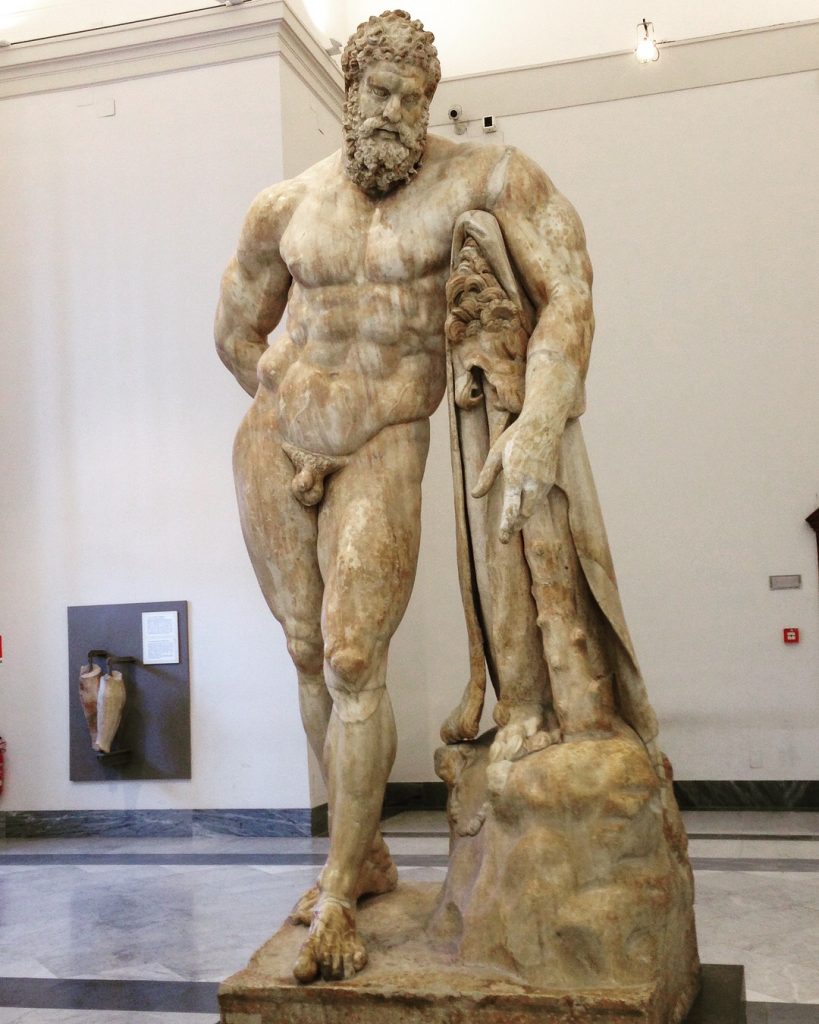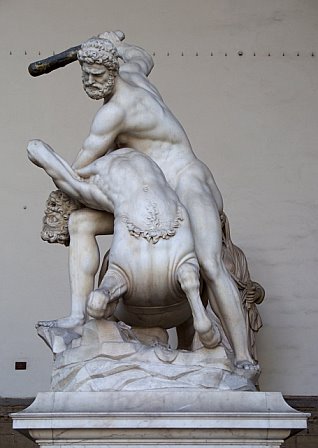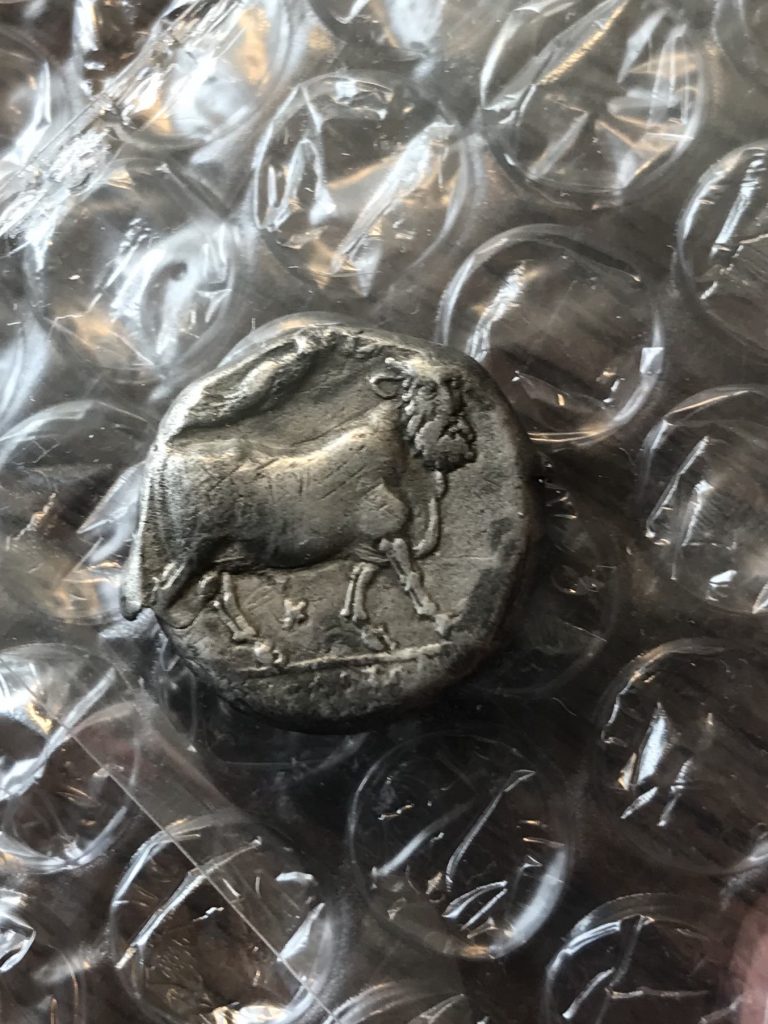LOVE’S LABOUR’S MISLAID
By:
November 5, 2021
One in a series of posts about Naples, by HILOBROW friend Wayne Chambliss.
BLOOD SIMPLE | MONMOUTH STRIKES AGAIN | LOVE’S LABOUR’S MISLAID | THE EXPERIMENTALIST | ALWAYS SOMEWHERE ELSE | ARE YOU A CHICKEN? | HAMMER OF THE GOTHS | PLACES OF THE HEART.

My favorite sculptural detail in Italy: the feet of the Farnese Hercules. Eerily similar to my own. The statue, signed by 3rd-century sculptor Glykon, is likely a copy of a more ancient one by Lysippos. It was excavated in 1546 — minus the legs, which weren’t found for another twenty years. In the meantime, Guglielmo della Porta was commissioned to make new ones. Michelangelo liked them so much he persuaded Farnese to keep them attached even after the originals were recovered — as a testament to the quality of then-contemporary sculpture. The ancient stems were finally reintegrated in 1787 when the Hercules was moved to Naples — its soil thus twice-stamped by the demigod.*

By happy coincidence, Goethe was traveling through the city incognito at the time, and got to see the statue before and after the procedure (which he documents in his Italian Journey). If you look carefully at the preceding image, you can see della Porta’s emergency gams hanging on a wall — should need for them ever arise again, presumably.

His feet are like I am.
His 1/2-sister is Venus.
In his armpit, a lion.
He has a small penis.
He had Amazon prime and a three-headed doggy.
When he went clubbing, it wasn’t to boogie. He,
whose fearful noogie slew the Hydra—
star of hydria, amphora and bowl.
Poor impulse control got him out of child support,
but with Eurystheus as his court-
appointed PO, work release was hard.
The fruit of some labor is inedible.
He looked incredible
on Monster.com, but died unhappily.
Learn more inside the Museo Archeologico Nazionale di Napoli.
PS: At some point — in the Roman period, or in its dusk — some unknown vandal (or Vandal, perhaps) entered the baths of Caracalla, decapitated the statue, and dropped the huge head of Hercules down a well in Trastevere. Legend.

*Excerpted from my correspondence with the painter Eric Sweet:
… A coin from the same period (320-300 BCE) in which the Romans wrested control of Campania — including Naples — away from the Samnites. On the front, the profile of Parthenope. Now, as I’ve mentioned, there is some question in my mind as to whether the city was called Parthenope because of the siren or the other way around, but let’s assume for purposes of this gift it was the former: that Naples was born of lovesick monsters and the sea.
On its obverse is an image of her father Achelous — in the form of a man-faced bull — being crowned by Nike. What this signifies is mysterious. Achelous famously lost his wrestling match against Heracles (and one of his horns in the process) for the hand of Deianeira. So, why the victory laurel? I have an hypothesis. Well, several.
According to Roy Merle Peterson’s The Cults of Campania, the 9th-century BCE colonists who founded Parthenope on Megaride brought the cult of Heracles with them from Rhodes. If so, it seems to me likely that Monte Echia’s local association with the man-god (and etymology) started with them. Within decades, Parthenope had swallowed the hill geographically, and the image on the coin might be meant to imply that this urban absorption represented the final triumph of the river god (through his daughter’s name) over the bastard of Zeus. Another possibility: that earlier Greek settlers on the Italian coast (Euboeans, perhaps) — gone native among the Oscans and Etruscans in the 10th and 9th centuries BCE — had been the ones to introduce the Heracles cult and establish a foothold socio-politically in the vicinity of Monte Echia, and were overwritten by the Parthenope-founding Rhodians. Which would account for the same symbolism of victory post-defeat. Another: that a previous generation of Samian colonists had introduced the cult of the sirens to the coast, and that when the Rhodian Heracles worshippers showed up in Megaride, they converted. Again, victory…
ALSO SEE: Wayne Chambliss on RADIOACTIVE TRINITITE | THE RIDE-ALONG | MATRYOSHKA CHEST. Tom Nealon on JENSON’S ROMAN | GARUM | POSCA. Joshua Glenn on BEASTLY NUISANCE (ARGONAUTICA) | James Parker’s bastardizations of THE KALEVALA | Matthew Battles on ALDINE ITALIC | Toby Ferris on ANATOMY OF NORBITON: AETIOLOGICAL | Flourish Klink on THE LIFE AND DEATH OF PATROCLUS SON OF MENOETIUS | Gordon Dahlquist on FELLINI SATYRICON.
